Columns
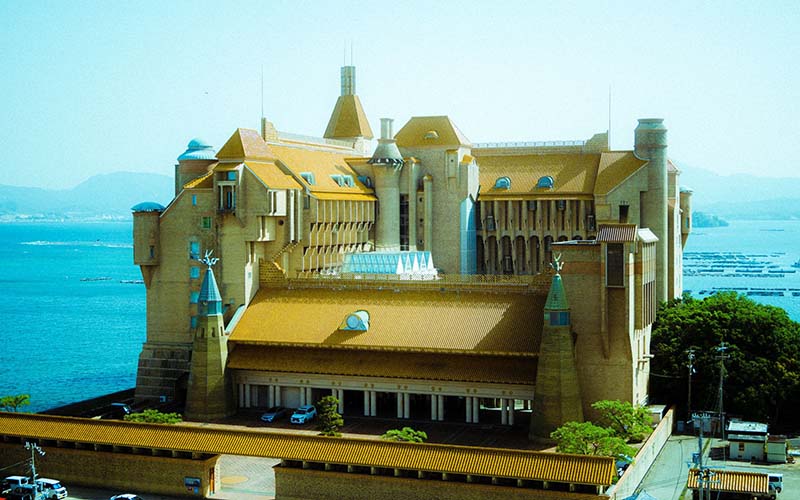
Nanki Shirahama Hot Springs Hotel Kawakyu
Kinan Art Week Curatorial Story
We are pleased to announce the release of “Curation Story Vol.2”, introducing the curation site at Kinan Art Week. For the second, we would like to introduce Nanki Shirahama Hot Spring Hotel Kawakyu to take a deeper look into its origins, history and philosophy of the hotel.
Nanki Shirahama Hot Springs Hotel Kawakyu
http://www.hotel-kawakyu.jp/en/

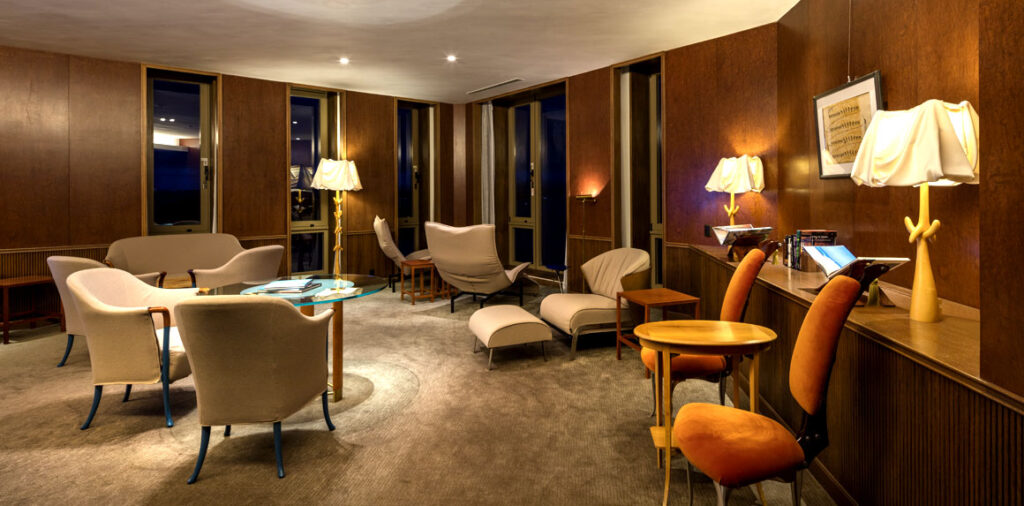
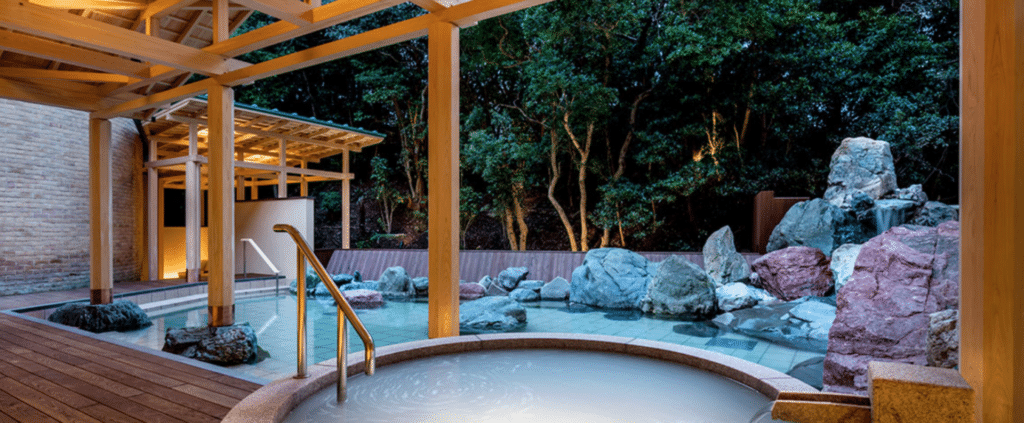
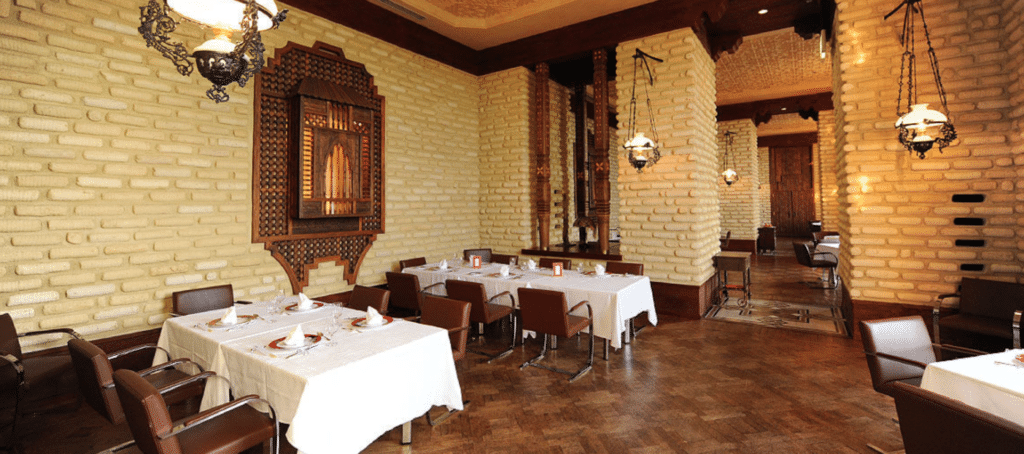
<Guest>
Nanki Shirahama Hot Spring Hotel Kawakyu
Kazuya Okamura
He is the driving force behind Hotel Kawaku. After working at the Kii Tanabe City Plaza Hotel, he moved to the Hotel Kawahisa to study wine. He has worked as restaurant manager and operations manager. He is now leaving his position to train and develop his younger colleagues.
<Interviewer>
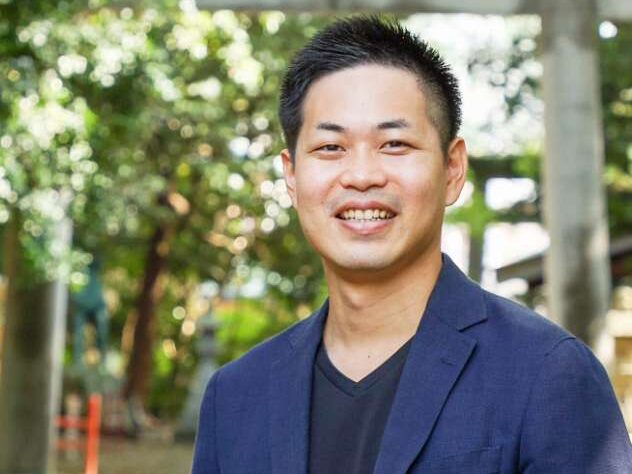
Yabumoto, Yuto
Kinan Art Week Executive Committee Chair
<Participants>
Mariko Sugi
Vice-chairman of Kinan Art Week
Manabu Shimoda
Executive Director of Kinan Art Week
Editing :
Kinan Editorial Department by TETAU
https://good.tetau.jp/
The Dream of the “World’s Finest” –A Fusion of Architecture and Art–
Table of Contents
1. From “Kawaku” to “Kawakyu
2. The golden carriage, a reversal of fortune
3. A one-of-a-kind hotel full of dreams and passion
4. “Yasuma-ism” passed down from generation to generation
5. What links the madness of the craftsmen
6. Hotel Kawaku is a paradise for dreamers
1. From “Kawakyu” to “Kawakyu
Yabumoto:
Thank you very much for taking the time to talk to us today. First of all, could you tell us a bit about your background, Mr Okamura?
Mr Okamura:
Originally I worked at the City Plaza Hotel in Tanabe, but I wanted to study wine, so I moved to Kawaku. At that time, Kawakyu owned 25,000 bottles of wine, making it the number one wine cellar in the East and one of the ten best in the world. After joining the company, I worked as a restaurant manager and as a manager of the operations department, overseeing the service department.
However, after the collapse of Lehman Brothers, we fell into a financial crisis, which also affected my health. Therefore, I am now out of my position and working as a freelancer to teach the younger generation.
Yabumoto:
Yes, I see. Can you also tell us about the history of Kawahisa?
Mr Okamura:
Kawakyu started out as a long-established ryokan in Nanki-Shirahama Onsen. I don’t know the exact date of its establishment, but it has been around since the end of the Taisho era or the beginning of the Showa era. The first owner was a merchant from Semba, Osaka called Kyubey Kawachiya. The name “Kawachiya Kyubei” (the name of the ryokan was derived from his own name “Kawa” and “Kyu”.
In the beginning of the Showa period (1926-1989), a man named Yasuma, who was to become the next owner of Kyubei Kawachiya’s long-established inn, came to stay at Kawakyu on his honeymoon. At that time, he became very interested in Kawakyu and said “I want to manage this inn in the future”, and left 500 yen as a kind of deposit.
When I joined Kawakyu, Mr. Yasuma had become Chairman and was a charismatic figure.
Katsuji Yasuma was originally from Yoshino town in Nara Prefecture. He was raised in a family that had been in business for generations since the Edo period and was the fifth of seven children. In the Meiji period (1868-1912). Business was not going well, so the family decided to let one of the children become a Buddhist monk. When he was 5 years old, his parents sent him to the temple.
He trained as a monk at Kiyomizu-dera and other temples for about 12 years until he turned 17, when he returned home and started his own business in Tokyo. He was a very ingenious man and became the best in his business. Later he returned to Osaka and started his own business.
However, the war started and the ryokan was used by the army during the war, and after the war was over, it was damaged by the tsunami caused by the Nankai Trough earthquake and the ryokan was in ruins. Kyubei Kawachiya decided that he couldn’t do it anymore and wanted someone to take over the management of the inn. It was then that he remembered Mr. Yasuma and decided to change the manager in September 1949. When the owner became Mr. Yasuma, the name of the inn also changed from Kawakyu (河久) to the present Kawakyu (川久).
2. The golden carriage, a reversal of fortune
Yabumoto:
How long was the ryokan out of service?
Mr Okamura:
I don’t know how long it was out of use, but when Mr.Yasuma took over the inn, it was difficult to get customers. Even so, he tried his best to run the inn, but when it was no longer viable, he happened to see a golden carriage that was once used by a member of the royal family being auctioned off. “This is it!” he thought, so he borrowed money to buy it.
If you see a golden horse-drawn carriage with “Nanki Shirahama Onsen Hotel Kawakyu” written on it running in the streets of Osaka, you would be curious. Seeing that golden picking up and dropping off guests at the Shirahama station was a novel experience.
In 1971, the National Athletic Meet (Kuroshio National Athletic Meet) was held in Wakayama, and because of the history of the Golden Carriage, Kawakyu became the hotel where the Emperor stayed in the Kinan area. From there, we heard that the hotel became popular because it was a long-established ryokan where the Emperor stayed.
Later, when the building became dilapidated and had to be rebuilt, the idea of creating a historical building was discussed, and after about three years of construction, the building was reopened on 20 November 1991. The president, Madame Hori, the president’s brother and sister, and Dr. Yuzo Nagata, who was in charge of the design, went to various places around the world to negotiate with artists and maestros.
Yabumoto:
I have read the newspapers of the time and have a rough idea of the kind of people who took part in the project, but it sounds like it was very difficult during the construction period.
Mr Okamura:
That’s right. One of the key people was Madame Hori, who said that she hadn’t rested at all during the three years of construction. She was a very positive person. She scolded me a lot at the time (laughs), but I respected her very much.
Yabumoto:
Why did she scold you so often? (laughs)
Mr Okamura:
She was very strict and uncompromising in everything she did. I had a good experience with Madame Hori because she brought a lot of great customers. Serving Madame Hori’s guests made me feel more comfortable with Master Club guests.
3. A one-of-a-kind hotel full of dreams and passion
Yabumoto:
When I heard your story, I was curious about why you decided to create a hotel that had never been built before. After all, we would like to ask you about the source of Madame Hori’s will and philosophy.
Mr Okamura:
It was the height of the bubble economy and there was a rush to build. However, if you look around, all you see are concrete skyscrapers. The bubble period is said to have been the most successful economic period since the beginning of Japan’s history, but at that time, the skyscrapers were all made of concrete. It was Madame Hori who wondered if these were the kind of buildings we should leave behind for future generations.
As for something more unique. If you go to France, you can find French style architecture, if you go to Italy, you can find Italian style, but there are not many things that combine the best parts of different countries. The concept was to create a one-of-a-kind hotel by combining all these elements, and I heard that she gathered various craftsmen from all over the world.
There were many difficulties in the negotiations, but the most difficult one was the roof tiles of Kawakyu, which are yellow and made of lapis lazuli, the same material used in the Forbidden City in Beijing. When Mr Nagata, the designer, and Madame Hori went to Beijing to buy the tiles, they decided to visit the Forbidden City because they had come all this way. After seeing the Forbidden City, they decided that they wanted this tile and that it was the only one they wanted to use..
They negotiated immediately, but it was not normal. In ancient China, yellow was a noble colour that could only be used by the emperor and was known as special yellow. The idea of using yellow tiles for the roof of a hotel in Wakayama Prefecture is unthinkable. Nevertheless, Madame Hori wanted the Forbidden City tiles so badly that she went to Beijing 20 times to negotiate. The other side was so overwhelmed that they agreed to create 470,000 tiles (laughs).
We have just made a video clip called “Kawakyu Museum Commemorative Film”, in which Madame Hori says that “madness through passion”, and I think that this is really the world we live in.
Yabumoto:
The very aim of this Kinan Art Week is to “make Kinan global “. The concept is to export things of real value to the world, so we were interested in Kawakyu, a unique building that brings together good things from all over the world, regardless of East or West.
Where did this commitment to excellence come from? Did Mr. Yasuma say, “Just do the best you can. Leave the details to Madame Hori and Mr Nagata”?
Mr Okamura:
That’s true. No matter how much Madame Hori said “This is how I want to do it “, President Yasuma had the final say. That being said, he said that he had full confidence in Madame Hori and allowed her to do almost everything.
Yabumoto:
However, Kawakyu went bankrupt four years after the renovation, didn’t it?
Mr Okamura:
The original plan was to build the building for 18-20 billion yen, but it ended up costing almost twice as much, which I think led to the collapse of the business four years later.
Soon afterwards, the company was placed under the control of the bank, and when that didn’t help, it applied for the Corporate Rehabilitation Law. From there, we were acquired by the current Karakami Group in 1999. After the acquisition, there were various difficulties such as the Lehman shock, but around 2015, investment in the Shirahama area became active, and Kawakyu was able to recover in a good way.
Three years ago, the president of the Karakami Group changed and decided to launch the Kawakyu Museum in order to present Kawakyu to the world. In addition, in August 2020, Kawakyu’s gold leaf ceiling was registered in the Guinness Book of Records and the award ceremony took place on December 8, 2020. The Guinness project was a joint effort between our former management, Madame Hori, and the current president of the Karakami Group.
4. “Yasuma-ism” passed down from generation to generation
Yabumoto:
Madame Hori has been actively promoting this project. What was Madame Hori’s background in creating the world-famous Kawakyu?
Mr Okamura:
Madame Hori was the daughter of the Chairman of the Board of Directors, Mr. Yasuma, and she was very much loved by him. There was a rule in the Yasuma family: after graduating from high school, she was supposed to enter Kwansei Gakuin University and study there for two years, and then go abroad to study wherever she wanted for the other two years. I heard that Madame Hori studied in the Netherlands and studied trade and other subjects. After graduation she worked in the trade.
The president is consistently in the ryokan business. He ran a Japanese-Western restaurant in the basement of the Nikko Hotel in Osaka, and a restaurant in the grounds of the Yakushiji Temple, probably because Chairman Yasuma was originally a monk and had a close relationship with the director of the temple.
Yabumoto:
As a former monk, was Mr. Yasuma generous in his support for culture and the arts?
Mr Okamura:
I think so. He was trained as a monk for about 12 years.
Yabumoto:
With Chairman Yasuma’s background as a monk, Buddhist art and other Buddhist elements came to Madame Hori. She also studied in the Netherlands.
How old was Madame Hori when she started to renovate Kawakyu?
Mr Okamura:
She was in her mid-fifties . I interviewed her for about two hours to make a video clip, and I was amazed to see how clearly she remembered things from 30 years ago.
Mr. Shimoda:
I also watched the video clip, and in the video Madame Hori made a statement like “Kawakyu should be a different world and a different space”. She said that Kawakyu should be a place where customers can come at 2am and say “I want to have a party now” and Kawakyu is the place where all their desires are accepted.” Was there ever a time where that actually happened?
Mr Okamura:
Yes, there was. As a general rule, we were told never to say “no” to a customer. Even if in the end we were close to saying “no”, considering various issues, we would first say “yes” and do what we could.
If you had to check in at midnight, if you were a VIP, there were a dozen of us lined up at the front desk to welcome you.
Mr. Shimoda:
From there, you can prepare their meals and drinks.
Mr Okamura:
Yes, such situations were not frequent, but they were common in those days (laughs).
Shimoda:
Was there anything you did to make it a special experience?
Mr Okamura:
It was not uncommon for a guest to suddenly say, “The cherry blossoms are in bloom, I would like to have a hot pot under the cherry blossoms”, and we would make preparations. However, most of the first time visitors were interested in the building of Kawakyu, so we used to give them a tour around the building first.
According to a guest who has been coming to Hotel Kawakyu since the days when it was a ryokan, the service at the ryokan was so good that she was told that she would never need to train as a bride if she worked as a waitress at Kawakyu.
In a typical hotel or ryokan, a waitress is in charge of everything from checking in at the front desk to serving food and cleaning. But at Kawakyu, they would come to the Yasuma family in the morning and share food and clothing with them until the night. They would serve breakfast to the owner, tidy up the owner’s room, and serve dinner.
At first you’re nervous because you’re dealing with the owner. But after a few months, when the owner says “she is ready” and she starts working at the ryokan, it meant that she was ready for anything. Basically, the owner teaches you how to serve guests. So, in the case of Kawakyu, when the owner said that even if “this girl starts today”, she could still serve customers at a high level.
Shimoda:
In a way, it’s like Yasuma-ism. Has it been passed down to the present day?
Mr Okamura:
It’s not easy (laughs). The company has changed.
Yabumoto:
How can we reconstruct that kind of Yasuma-ism in our time?
Shimoda:
It looks like there are still some parts of it left, though.
Mr Okamura:
There are still a few employees from the days of the ryokan, so we have inherited what we can from them. In particular, I would like to preserve the spirit of the company. We are continuing our efforts to pass on the spirit that we have cultivated over the 72 years since Kawakyu was founded by speaking directly to our younger staff.
Shimoda:
Are there still any elements that are original to Kawakyu, for example, elements that have been translated into manuscript in the company motto?
Mr Okamura:
The company was bought by the former Karakami Group (then Karakami Kanko) in 1999, but Shigeo Karakami, the founder of the Karakami Group, and President Yasuma had completely different ideas and different ways of managing the company. It is not a question of which is better or worse, but since the Karakami Group took over, we have changed to a new way of doing things.
However, the current owner of the Karakami Group has been replaced by the founder’s grandson, Yamato Karakami, who has a different idea. Mr Yamato says he wants to reintroduce the unique Kawakyu that President Yasuma and Madame Hori wanted to bring to the world, and he is working on a new form of communication.
President Yasuma said to me 30 years ago “Mr. Okamura, this hotel will be a world heritage site in 100 years”. At the time I thought he was joking, but after 30 years of working for Kawakyu, I am convinced that this building will definitely become a cultural asset.
5. What links the madness of the craftsmen
Shimoda:
Have you ever been to the site when it was under construction?
Mr Okamura:
Yes, I have. I worked with the staff to build the floors and install the furniture. I also remember getting on the scaffolding that had been erected in the lobby when it was first built to wipe the ceiling for two hours with about 60 staff to put the gold leaf on. At the time, we had no idea that the ceiling would be gilded. I was even more surprised when I returned two months later to find the gold leaf had been put up. When I remarked that it must’ve taken about a hundred people to put up all these leaves, they told me that three people did the whole thing.
The ceiling is covered with about 190,000 sheets of 22.5 gold and 1 micron German gold leaf . They were put up by the Robert Goert workshop in France. It was summer when the gold leaf was put up, but gold leaf is very delicate and if the wind blows even a little, it will fly right off. So, naturally, air conditioning was not available, and the fact that 190,000 sheets of gold leaf were applied in two months in the extreme heat was truly a feat of craftsmanship.
Shimoda:
Like the gold leaf on the ceiling and the bricks on the exterior walls, many parts of the building are made by hand in a laborious process. The craftsmen who make these parts have their own ideas, their own particularities and their own claims. In other words, there are many different “beasts of prey”. Was your designer, Mr Nagata, the beastmaster who united all these fierce beasts?
Mr Okamura:
Mr. Nagata is more of a “beast of prey” himself (laughs). In fact, there was another designer, Kitano, who was closer to organising the project.
The relationship between the craftsmen was organised by Akira Kusumi, a plasterer from Awaji Island. We had a team of about 100 to 200 craftsmen called “Hanasakidan”, and Mr. Kusumi was the leader of the team.
Also, no general contractor was involved in the construction of Kawakyu, but a local construction company called Kita Komuten, not far from Kawakyu, was the primary contractor.I think it was quite difficult at the time.
Shimoda:
In the interview in the newspaper, Mr. Nagata said that “we have to get rid of common sense”, which I think is a feeling similar to that of contemporary art. It is a tremendous task to get rid of common sense and then put everything all together, but Mr. Kitano has harmonised it.
Mr Okamura:
I think so. Mr. Kusumi used to say that it’s not often that you have the opportunity to bring together so many leading maestros in different fields. Normally, someone takes the lead in creating something. However, at Kawakyu, a large number of composite masses came together and listened to the opinions of everyone. The passion of the craftsmen who came together was not half-baked. Madame Hori calls it madness.
Yabumoto:
What was the link between this madness and the rest of the world? There must always be a vision to integrate, right?
Shimoda:
If each artist just worked on his own ego, it would never come together.
Mr Okamura:
That was Madame Hori, after all. It was Madame Hori who negotiated and talked with the craftsmen. Then there was Mr. Nagata who designed the building.
Yabumoto:
What kind of world does Madame Hori see? I would like to know what kind of world she wants and what kind of world she wants to live in.
Mr Okamura:
When Madame Hori was a teenager, she loved to say “question common sense”.
Yabumoto:
She was a complete artist (laughs). Maybe that’s why, in questioning common sense, she came up with the concept of integrating all the great things in the world.
Mr. Shimoda:
But I think that more often than not, things don’t come together there. It’s just that there are no details left, and I’m sure there were conflicts on the ground.
Mr Okamura:
I think there were conflicts: it was completed 30 years ago, but it was not completely finished. For example, the original plan was to have a pipe organ in the lobby, commissioned by Marc Garnier, the master of the pipe organ, but that was cancelled. Perhaps not everything was a success.
But if you look at the lobby, I think they wanted to create different worlds and express what is unique here.
6. Hotel Kawakyu is a paradise for dreamers
Yabumoto:
When I listen to your story, I feel something akin to Buddhism . Like the universe.
Mr Okamura:
There is a bath on the ground floor of the hotel and on the wall there is a drawing of the life of a Chinese hermit, which was written in the handwriting of President Yasuma.
Kawakyu also has a large collection of other wonderful Japanese craftsmen’s work. The Kawakyu Museum also has paintings, and I was surprised to find many paintings by Ikuo Hirayama. It seems that Chairman Yasuma was fond of artistic things, as he also collected paintings by Taikan Yokoyama.
Yabumoto:
What is the message behind Kawakyu’s buildings? Certainly, the building itself, created with the skill of craftsmen from all over the world, is wonderful, but what is its essential meaning? What kind of world do they want to see, what kind of world do they want to make, and why do these buildings exist? This is a very abstract question, but I would like to understand its ideological nature as much as possible.
Mr Okamura:
The owners said that they wanted to create a paradise for dreamers. There are different definitions of “dreamers”, and in the case of construction, artists and maestros are dreamers. This of course includes the owner as well. . Once the building is finished, it is a dream space for our staff and, of course, for our clients. They said that they wanted to make it an extraordinary space, a different world, a paradise.
Yabumoto:
It’s a place that integrates and can integrate the dreams of many different people.
Mr Okamura:
Apart from the intentions of the old management, the current president of the company says that he wants his customers to leave not only satisfied, but also impressed beyond their expectations and come back again. Most of the time we end up with the word “satisfaction”, but what we want is to leave an impression. . He said that he wanted to provide an experience that exceeded expectations. Kawakyu is a place that can provide that impression, and the rest depends not only on the building but also on the staff who work there.
Yabumoto:
There’s a very difficult question in art: how do you define art, but Kinan Art Week takes an extremely broad view, saying that if it moves you, it’s art. In that sense, I thought Kawakyu and Kinan Art Week had a lot in common. Also, it’s important to have a place where people can get together and transcend their assumptions and common sense.
Mr Okamura:
The story I gave is the information I heard from Madame Hori, President Yasuma, President Karakami and our members’ customers. So it may have been a bit abstract, but I think that’s a good dream to have.
Yabumoto:
Do you have anything in mind, Ms. Sugi?
Sugi:
Thank you very much for your story. I used to work for a company that organised international travel, so I had the opportunity to stay in some of the best hotels abroad. When I had such an experience of encountering the real thing, I felt that I wanted to be worthy of this place from within my heart. In the current Kinan Art Week, the challenge is to show people that art is not something distant from them, but something close to them, and I think it is important to increase the number of opportunities to come into contact with the real thing like Kawakyu.
Mr Okamura:
This is a bit different from what you have just told us, but the Corona pandemic has completely changed our customer base. What is particularly different is that from February to April 2021, students started to come here on their graduation trips. They said, “I can’t go abroad so I came to Kawakyu.” The craftsmen who built Kawakyu are first class and the buildings are authentic. I was very happy that young people were able to experience the real thing.
Yabumoto:
What is your dream, Mr. Okamura?
Mr Okamura:
I want to preserve Kawakyu for future generations, as Madame Hori and others have left it to us. I am proud of Kawakyu, which is a wonderful building, if I do say so myself. It’s not easy to work in Versailles and it’s not easy to work in the Forbidden City. I am happy to work in that sense, and I hope that 200 or 300 years from now someone will be talking about Kawakyu instead of me. In the world, the Palace of Versailles and the Forbidden City are historic, so I think Kawakyu should be like those buildings.
Yabumoto:
Thank you very much for the long time. I’ve learned a lot today.

